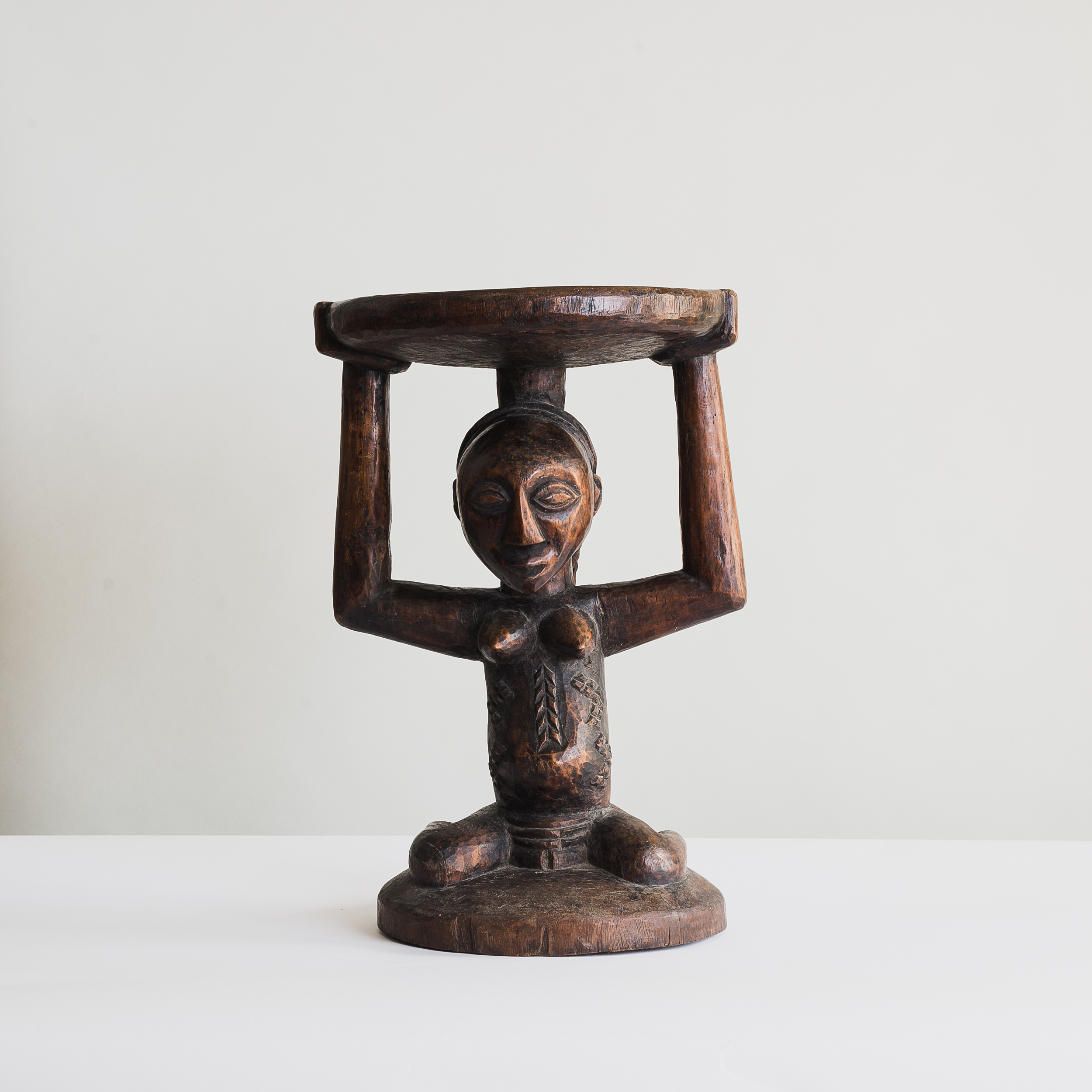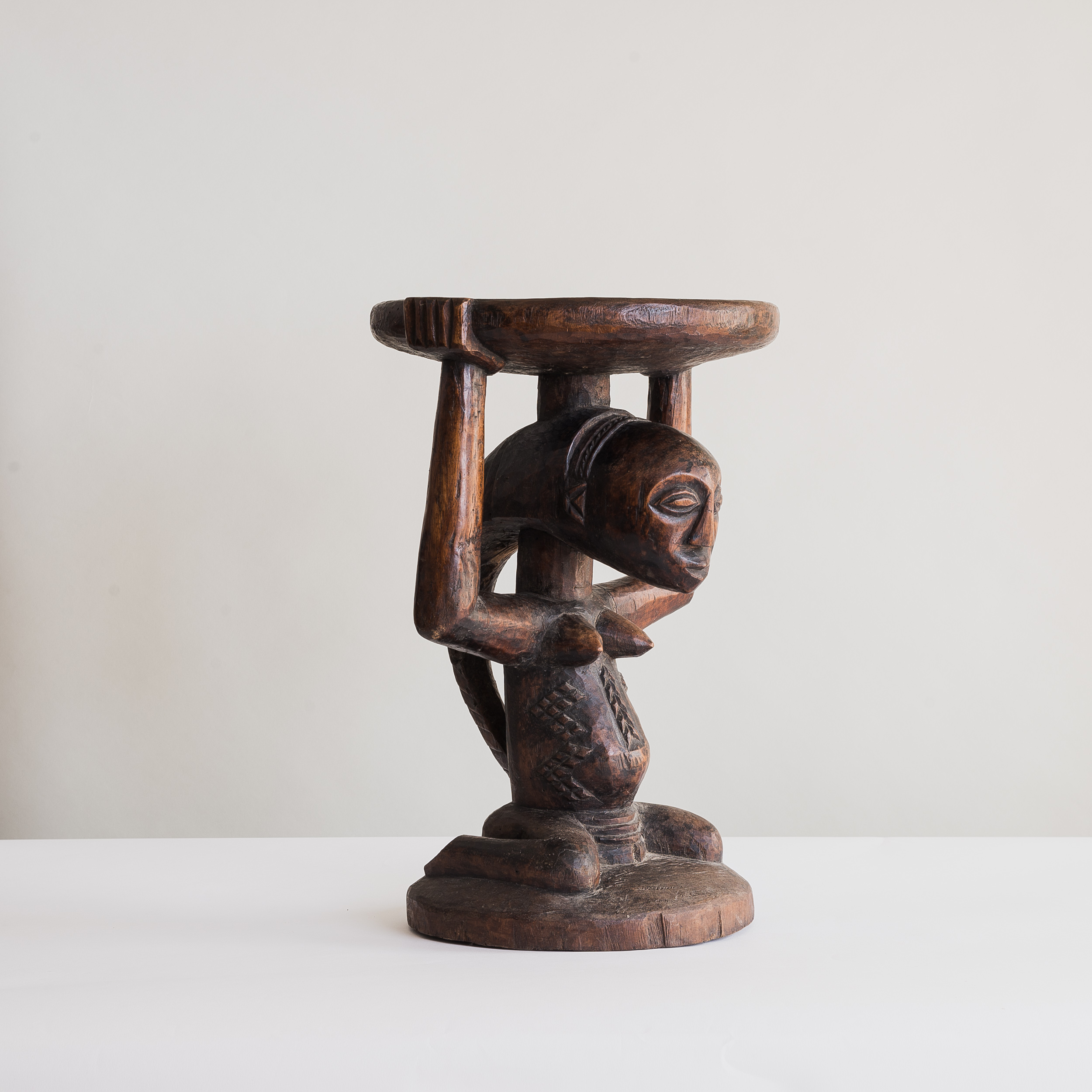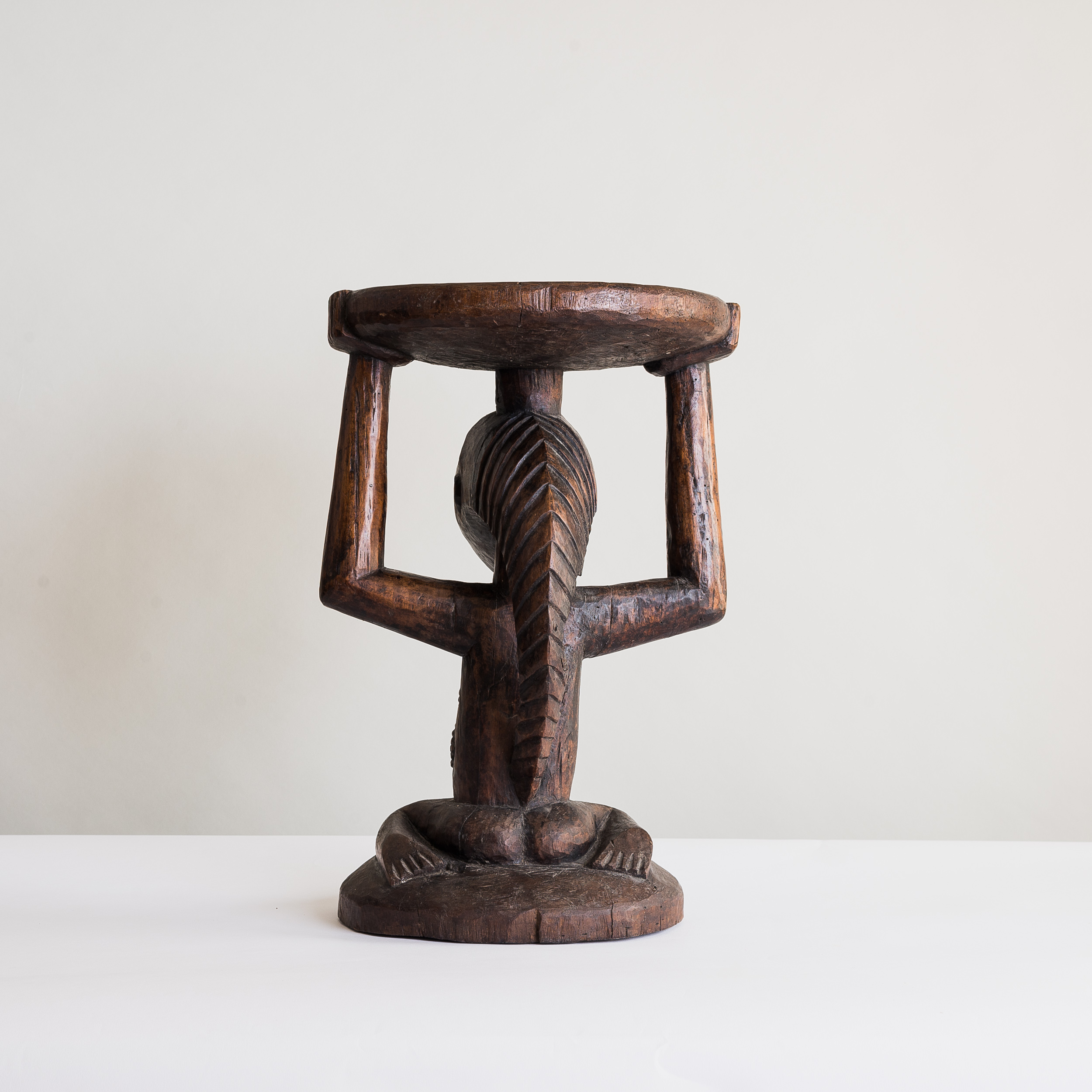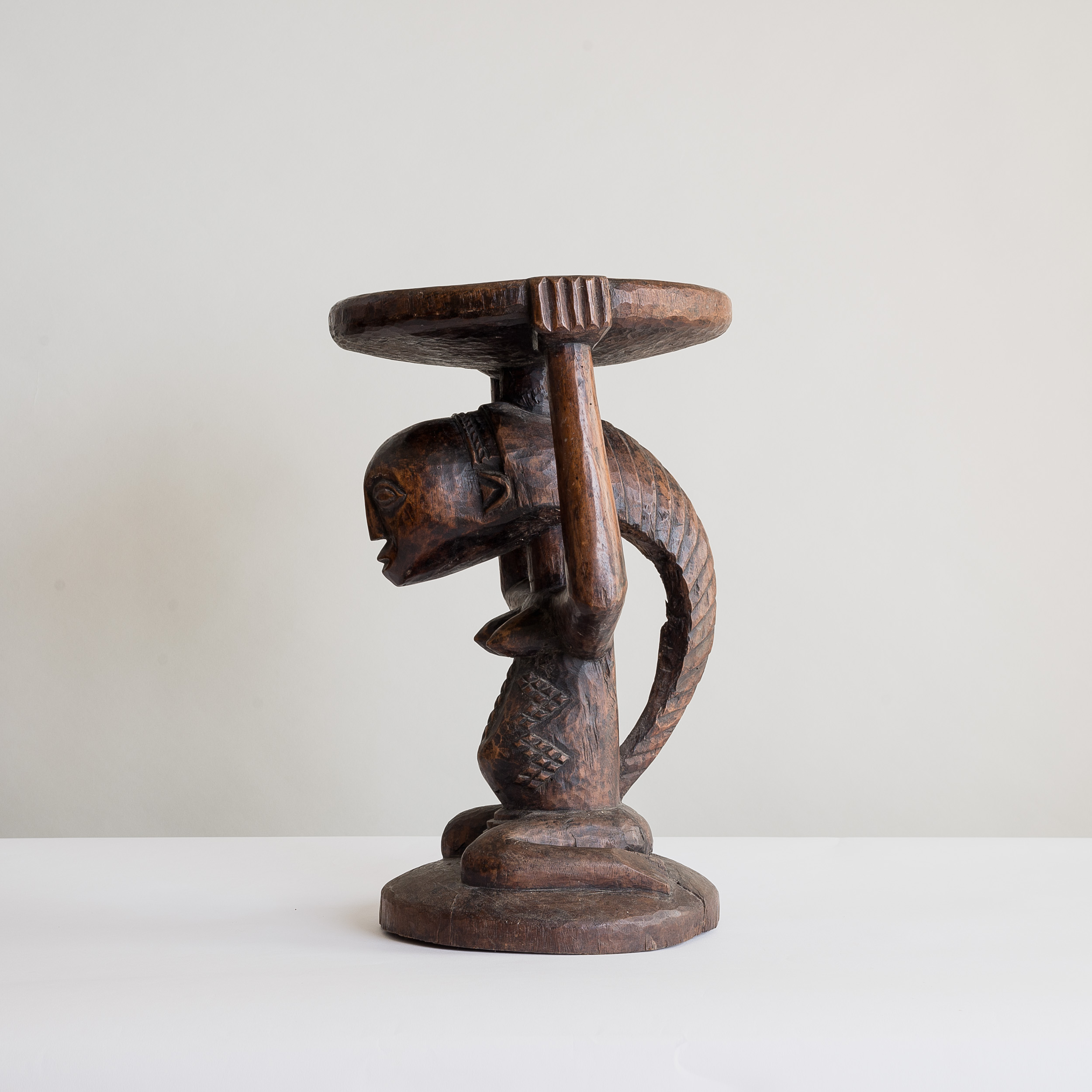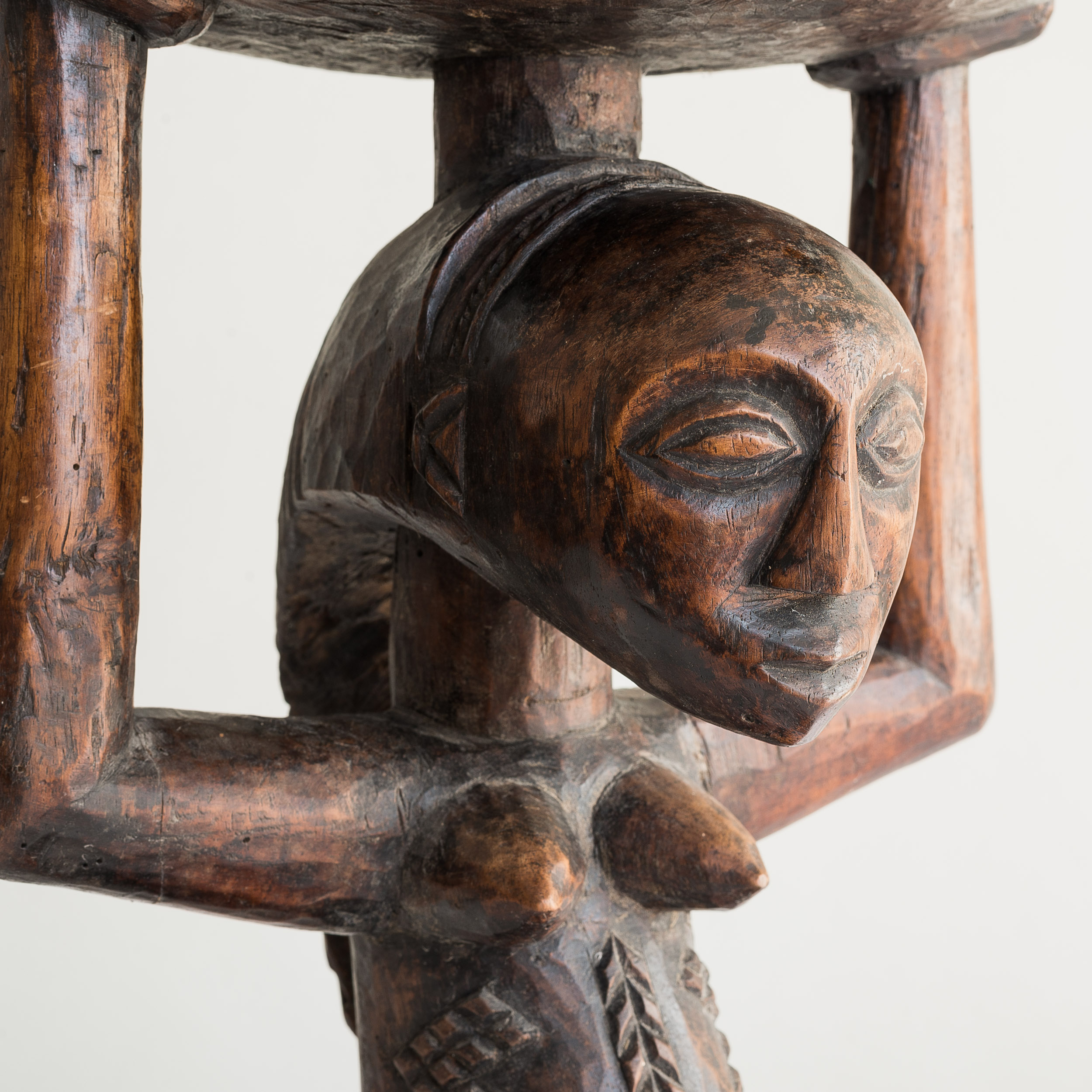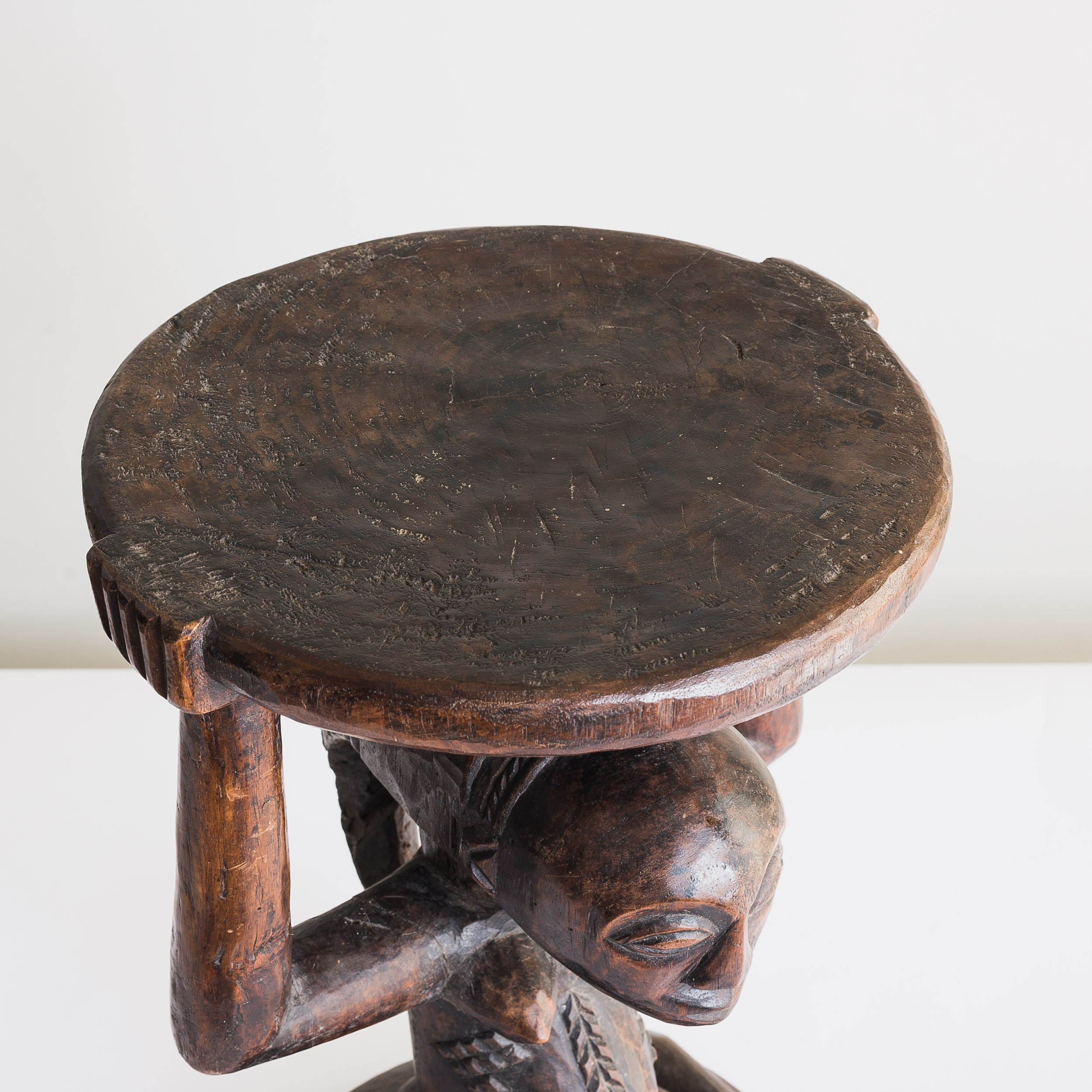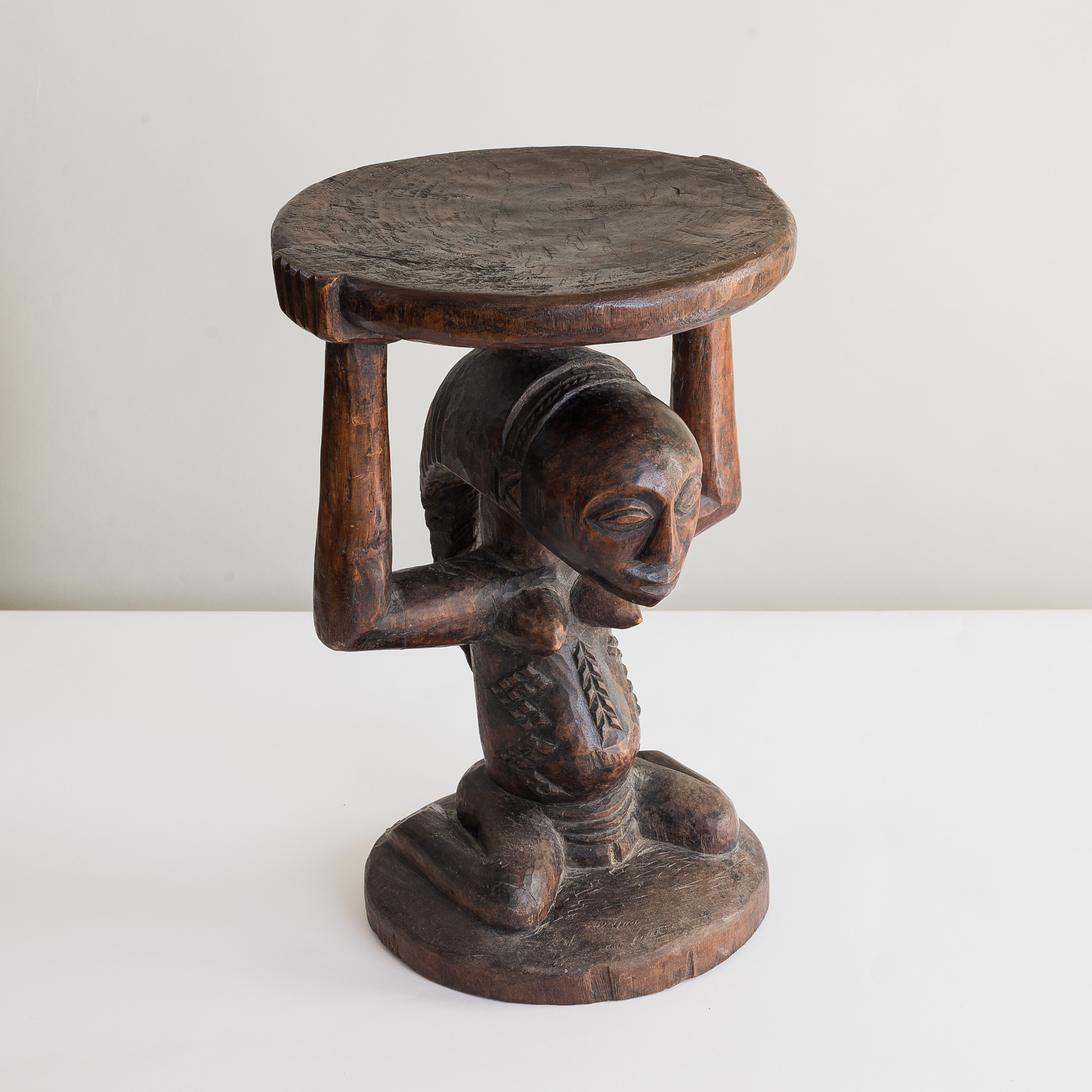Tabwa stool
Democratic Republic of Congo, a kneeling female with braided hair.
Congolese Tabwa art has distinct similarities to that of the Luba tribe, and its stools are used also in ceremonies by the Kings and Chiefs of the community with a means of establishing power and authority. The key difference seen between the two is the Tabwa’s traditional depiction of braided hair as a carved extension of the head and checkerboard-style scarification of the woman’s body.
£350
In stock

